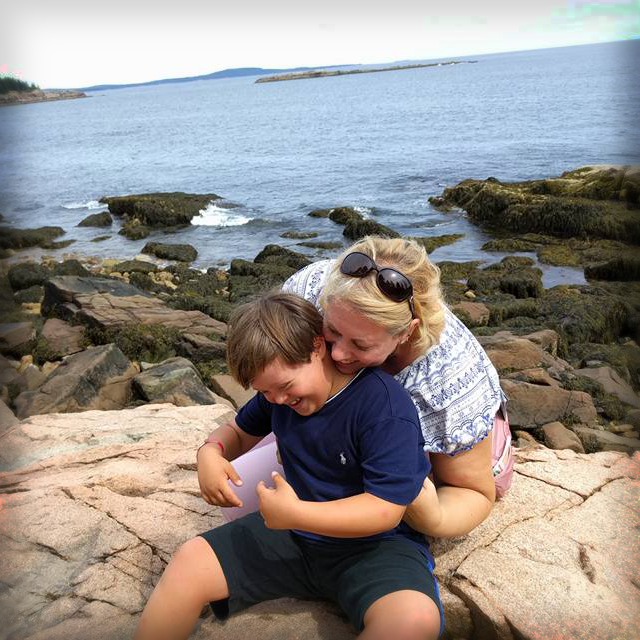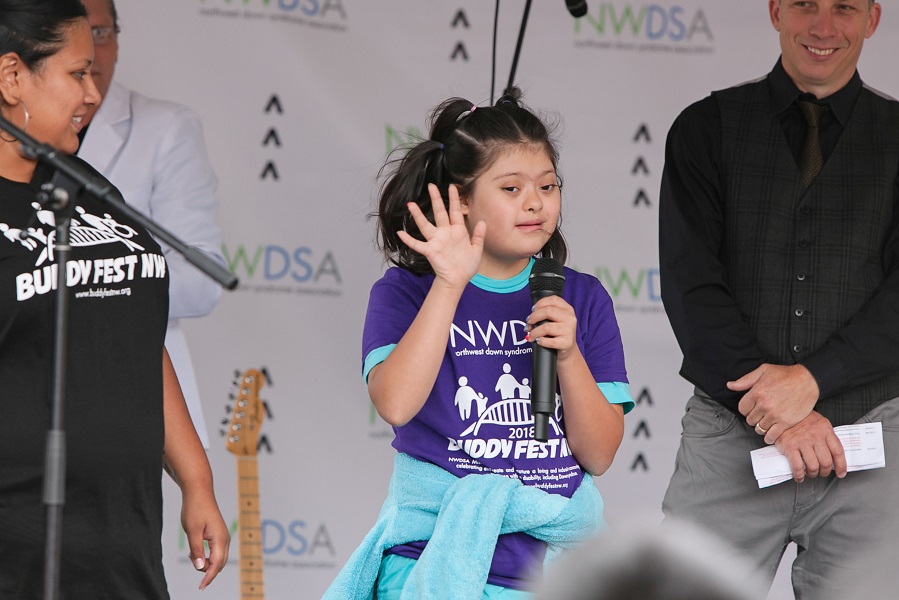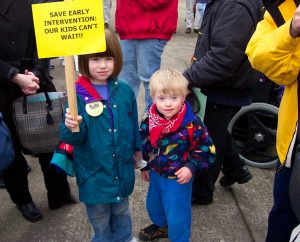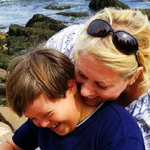Note: October is Down Syndrome Awareness Month.

Jessica Wilson and her son, Jasper
A guest blog by Jessica Wilson. Jessica and her son, Jasper (aka Jaz, Jazzy, the JazMaster, or Dude!), live in a cozy house of fur with two crazy dogs and two lazy cats. Their favorite activities include singing movie hits, dancing in the kitchen, snuggling and traveling the world together. Jessica is Director of Communication and Dissemination for the Center for Parent Information and Resources (CPIR) and Resources for Access, Independence and Self-Employment (RAISE) projects with the Statewide Parent Advocacy Network (SPAN) in New Jersey.
Number One. “Did you know?”
They never complete the thought, as if just looking at him implies what they’re really asking. I ache to play dumb: Know what? That he would almost never cry as a baby and be a champion sleeper? That he would love to swim but hate to play soccer? That I could love him ‘til it hurts and still get so annoyed by some of his antics? As obnoxious as my brain screams for me to be, I simply answer, “No. After losing the first one, I didn’t want to take any chances with this very wanted baby.”
The mention of my previous sorrow precludes them from saying anything directly about those tests, so I leave it at that. I resist ranting about warped concepts of perfection or the technologies the medical community pushes that are incapable of measuring the value of those born “dappled.” If I launch into my diatribe, their eyes glaze over as they nod in the faux agreement children give their parents when they just want the scolding to stop. I can always tell when they’re thinking, “I would have the test.” I couldn’t guess what they would do if it were positive.
Number Two. “My sister’s/cousin’s/brother-in-law’s/landlord’s daughter/nephew/classmate/neighbor is ‘like him’.”
What, rakishly handsome? Lucky them. A consummate flirt? Better watch out! The self-appointed town mayor, greeting every person or animal we see on the streets? Good luck getting anywhere quickly with such a gregarious kid.
I suppose it’s an attempt to connect, a way to say “he’s okay” because they know someone who knows someone who… But sharing an extra chromosome doesn’t make anyone like someone else any more than two people having green eyes does. Don’t tell me these six-degrees individuals are “like” each other. They aren’t.
Number Three. “He’s so high-functioning.”
Yeah, far more than I am at 3:00 a.m. “MOMMY!” “urgh…?” “WHY ARE YOUR EYES CLOSED?!” “I’m sleeping, baby.” “WHY?!” “unnnhhh…” “READ TO ME!!!!” (seriously?)
Number Four. “Funny, you can’t see it.”
What’s there to see? His almond shaped eyes that look through me as the spark of laughter flickering within them sears my soul? His cute little hands with that long crease across his palms holding mine, petting the cat, learning to write his name, wiping away tears when he’s mad? The orthotics helping reshape his desperately flat feet?
What exactly are you looking for that will legitimize him in your eyes? Maybe I should carry the envelope with the verdict handed down by some anonymous technician. Perhaps the letter from the state when the lab automatically reported his existence to the county health department “for statistical purposes.” What can’t you see? He’s a kid, growing up loved. What else are you looking for?
Number Five. “I’m sorry.”
You should be. You’ll never hear the thoughts he speaks to me with his smiling brown eyes as he tilts his forehead to rest against mine. You’ll never drink in the heat that radiates from his head or taste his soft hair on your lips. You’ll never be awakened (again) at 3:00 a.m. by the hot air from his mouth on your face as he whispers, “Mommy, I want snuggles.” You’ll never know how it feels to celebrate every jump forward in development that other parents take for granted, but when he finally does it, it’s a very, very large molehill.
You should be sorry that you can only see back in time. This is a new era with new opportunities and new ideas about potential and worthiness. I’m only sorry it’s taken this long and that we still have so far to go.
Number Six. “That’s awesome!”
Thanks, Brian—you are the right kind of friend. May everyone with a kid “like mine” know a man like you.
Number Seven. “I don’t know how you do it.”
I’m his mother. Still confused?
Things I Say.
“I’m so proud of you.” “Boy, you’re handsome!” “Why won’t you let me cut your nails?” “TURN THAT DOWN!” “Wanna go bowling?” “Sweetheart, don’t let the dog beg like that.” “Would you please put this stuff away?” “You’re just too good to be true/Can’t take my eyes off of you.” “No, I don’t want to smell your feet.” “I love you, my sweet angel. You’re my heart and soul, my love and my life.” “You know you drive me nuts, right?”
Number One.
“I’ve loved my son since before he was ever born. What else is there to say?”
Blog articles provide insights on the activities of schools, programs, grantees, and other education stakeholders to promote continuing discussion of educational innovation and reform. Articles do not endorse any educational product, service, curriculum or pedagogy.















